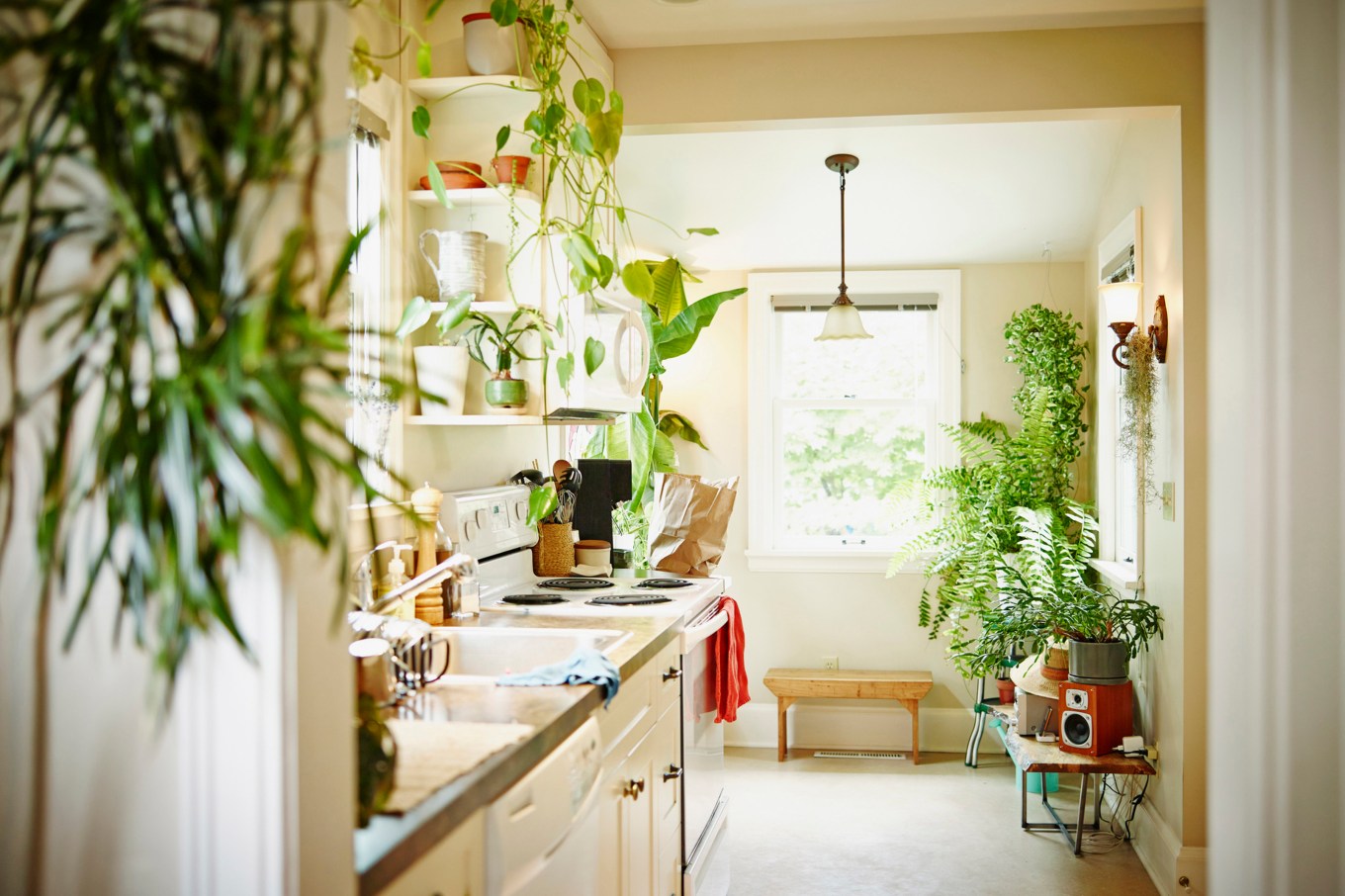Quartz countertops and fancy finishes are taking a back seat to the hottest real estate trend: wellness home design. The idea is to create spaces that do more than look good; they make you feel good. After all, where and how you live can affect up to 80% of your health outcomes, says Teri Slavik-Tsuyuki, co-chair of the Global Wellness Institute’s Wellness Communities and Real Estate Initiative. Wellness-focused homes can support more physical activity, improve sleep, and lower the risk of chronic disease, the institute says.
Here are five ways to incorporate wellness home design.
Let the Light In
Natural light improves mood and regulates sleep. It can also reduce those high energy bills and the stress that comes with them.
- Maximize sunlight: Use sheer curtains and mirrors, and keep windows unobstructed.
- Consider circadian lighting: Systems like Ketra mimic daylight cycles. The provide bright cool light in the morning and dim warm light in the evening, says Betty Brandolino, founder and creative director of Home Environments in Elmhurst, Ill.
- Watch light temperature: Soft-white LED bulbs (2700 to 3500 Kelvin) are less harsh than high-intensity bulbs, says Audra Slinkey, president of Home Staging Resource, Encinitas, Calif.
Prioritize Clean Air and Water
Indoor air can be more polluted than outdoor air.
- Invest in air purifiers: HEPA purifiers capture 99.97% of particles; options include portable or built-in systems, like ActivePure.
- Change HVAC filters regularly: Experts suggest changing filters every three months; in heavy-use seasons, change monthly.
- Limit indoor chemicals: Avoid VOC-heavy paints, cleaners, and air fresheners. When you do use them, open windows or turn on fans. Also, consider cleaning products with natural ingredients, like baking soda or vinegar.
- Filter your water: Consider whole-house, under-sink, or refrigerator filters for cleaner drinking water.
Create Restorative Spaces
Pinterest reported a 405% search increase in “zen house” or “tranquil retreats” in 2024.
- Think beyond room function: Turn bathrooms into mini spas with dimmable lighting, calming colors, or a small fountain. One in four homeowners now use their primary bathroom for relaxation. That trend is prompting wellness upgrades like spa tubs, better lighting, and water features, according to the 2025 Houzz Bathroom Trends Study.
- Create a Fortress of Solitude: Borrow from Superman’s playbook and carve out corners to rejuvenate. Those include spaces for meditation, yoga, reading, or hobbies such as art or music.
- Declutter: Research shows clutter can hurt your health and even be linked to depression, anxiety, overeating, and burnout.
Why Decluttering Works
“Tidying, sorting, storing, and organizing one’s things restores people’s sense of control over their environment,” according to research by Joseph Ferrari, professor of psychology at DePaul University in Chicago, and Catherine Roster, professor of marketing and consumer psychology at the University of Mexico. In addition, having fewer possessions to take care of frees people up to focus on what really matters, they say.
Bring the Outdoors In
Incorporate biophilic design in connecting the outside with the inside for a mood boost.
- Embrace natural finishes: Wood, stone, and earthy colors can create a calming atmosphere. Wood-drenched spaces fit with this. Online searches are surging for “living rooms with light hardwood floors,” “wood paneled offices,” and “woven wood shades,” Houzz notes.
- Extend indoor spaces: Patios, outdoor kitchens, and small balcony gardens can foster social and nature connections, according to the American Society of Interior Designers 2025 Trends Outlook report.
- Add plants: Studies show that indoor plants can improve your mental and physical health. They can even lower your stress and blood pressure. “They bring life, offering that subconscious boost that comes from being surrounded by nature,” says Matthew Coates, managing partner at Coates Design Architects + Interiors in Los Angeles.
Build Social Connections
Research shows that homes that support connection can strengthen your well-being.
- Create social spots: Firepits, backyard dining areas, and outdoor living areas can encourage interaction with family and neighbors.
- Design fun zones: Game rooms, putting greens, or hobby areas support play, creativity, and relaxation. That trend is becoming more popular, Houzz says.
- Spotlight the front porch: Add a seating area, lounger, or porch swing to hang on the front porch of your home. The addition will encourage engaging with neighbors. Even a small stone courtyard or pergola creates an inviting space to connect.
Wellness home design doesn’t require a new build or a full renovation. Small changes include lighting, air quality, natural touches, and carving out social spaces. They can help transform your home into a healthier, happier place.
